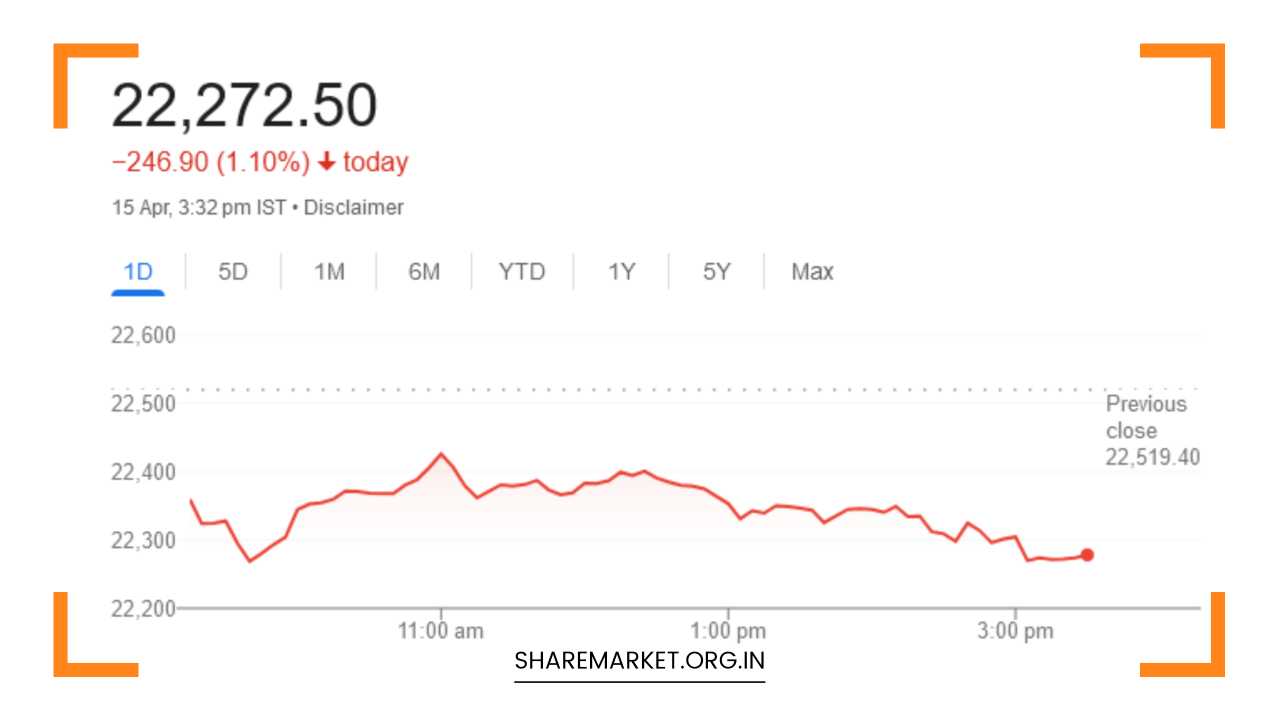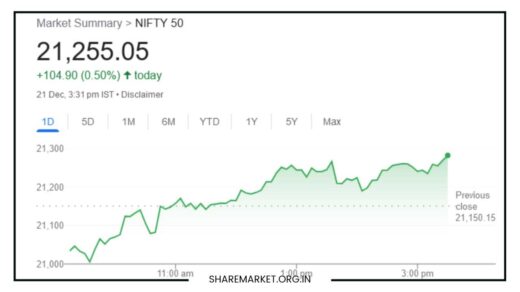Nifty Closed at 22,272; Nifty Prediction for Tomorrow

Nifty Prediction for Tomorrow
Indian Stock Market Tumbles on Geopolitical Jitters (April 15, 2024)
Indian equity markets witnessed a brutal sell-off for the second consecutive day on April 15th, 2024, as rising tensions between Israel and Iran rattled investor confidence.
The benchmark indices, Sensex and Nifty, plummeted by over 1% each, extending the correction phase that began earlier in the week.
Dissecting the Decline: A Day of Relentless Selling
The trading session opened on a somber note, with a distinct lack of buying interest. As the day progressed, the selling pressure intensified, dragging the indices lower relentlessly.
The Sensex shed a significant 845.12 points (1.14%), closing at 73,399.78. The Nifty mirrored the decline, falling 246.90 points (1.10%) to settle at 22,272.50.
Sectoral Carnage: All Except a Few Feel the Heat
A closer look at the sectoral performance reveals a bloodbath across most segments. All sectoral indices, with the exception of oil & gas and metal, ended the day in the red.
The decline was particularly pronounced in media and PSU banks, which witnessed a significant erosion in value.
Broader market indices, the BSE Midcap and Smallcap, suffered even steeper losses, plunging by 1.5% and 1.73%, respectively. This indicates a deeper correction in these segments compared to the large-cap Nifty 50.
Nifty Performance: Winners and Losers
Among the Nifty 50 constituents, several prominent names found themselves on the losing side. Stocks like Shriram Finance, Wipro, Bajaj Finance, ICICI Bank, and Bajaj Finserv succumbed to the selling pressure and closed with significant losses.
However, there were a few bright spots. ONGC, Hindalco Industries, Maruti Suzuki, Nestle India, and Bharti Airtel defied the downtrend and managed to close higher on the day.
Mid & Small Caps: A Technical Break and Cause for Concern
The correction in the mid-cap and small-cap segments was not just steeper in terms of percentage decline, but also concerning from a technical analysis perspective.
These indices not only fell more than the Nifty 50, but also breached their previous support levels. This technical formation, known as a bearish candlestick pattern, suggests a potential for further downside if the selling pressure persists. Investors closely monitor these support and resistance levels to make informed trading decisions.
Expert Views: Weighing the Headwinds
Market experts weighed in on the reasons behind the decline, attributing it primarily to the escalating geopolitical tensions in the Middle East. Aditya Gaggar, Director of Progressive Shares, highlighted the negative impact on global market sentiment and the failed attempt at a recovery during the trading session.
He believes that in the near future, Nifty could find support at 22,185 and face resistance at 22,430. These support and resistance levels are crucial technical indicators that traders use to gauge potential price movements.
Prashant Tapse of Mehta Equities emphasized the escalating conflict between Iran and Israel as the key factor driving investor caution.
He warned of potential for further selling pressure if the situation worsens in the region. Additionally, global anxieties surrounding potential interest rate hikes by major central banks added to the overall uncertainty in the market.
Key Takeaways and Looking Ahead
- Geopolitical tensions, profit booking by investors, and concerns over global interest rates led to a significant decline in Indian equity markets.
- Sensex and Nifty fell over 1% each, extending the ongoing correction phase.
- Broader markets (mid-cap and small-cap) witnessed a steeper decline compared to the Nifty 50.
- Oil & Gas and Metal sectors were the only bright spots, with all others closing in the red.
- Experts predict potential support and resistance levels for Nifty in the coming sessions.
- The future direction of the market hinges on the resolution of geopolitical tensions and global cues, particularly upcoming corporate earnings and global market trends.
Beyond the Headlines: Potential Long-Term Implications
While the immediate focus is on the short-term impact of geopolitical tensions, it’s crucial to consider the potential long-term implications for the Indian stock market.
Escalating conflicts in the Middle East could disrupt global oil supplies, leading to price hikes and impacting inflation. This, in turn, could force central banks to raise interest rates more aggressively than anticipated, dampening economic growth prospects and potentially impacting corporate earnings.
On the other hand, a swift resolution to the geopolitical crisis could lead to a sharp rebound in the market.
Additionally, the upcoming March quarter corporate earnings season will play a key role in shaping investor sentiment.
Strong corporate earnings reports could bolster confidence and trigger a buying spree, while disappointing results could exacerbate the ongoing correction.

















